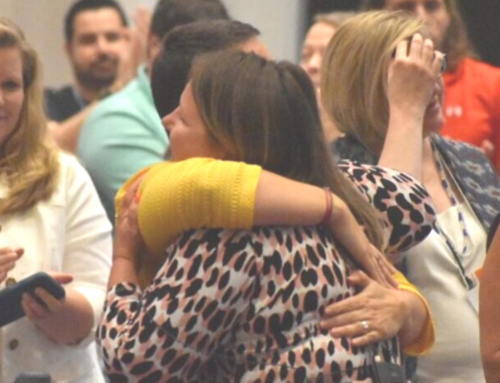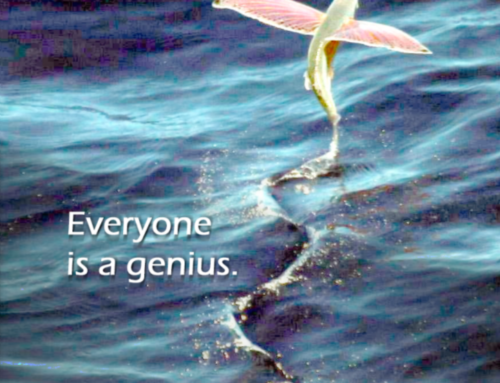Elinor Slomba – (@artsint) has nearly twenty years’ fundraising and management experience combined with training in ethnographic field research methods and Agile project management frameworks. She collaborates with professionals in visual, performance and literary arts as well as software development and other technical fields to deepen understanding of principles necessary for innovation.
Her company, E. Slomba Arts Interstices, helps organizations in the arts and start-up worlds share models and understand each other better to build value across domains. Here she is as our next #WomenInAgile contributor:
My favorite projects are ones in which the goal is clear but the path is uncertain. Finding the best way to proceed becomes a “we” thing – surpassing any individual’s view of reality. Enlarging my own ideas about what’s possible is the joy of collaborating. Leading a group through this process has at times felt sublime as outcomes emerge which none of us could have predicted.

The work I do is not software, it’s storycraft. This means there is a story to be told about a community, and the product is an experience to be crafted which – if successful – will propel that story forward. Reflecting on some of the most satisfying of these projects, I am struck by a consistent pattern of iterative teambuilding as a narrative practice which supports emergent outcomes.
Iterative teambuilding can be visualized as the building up of a team up in concentric circles outward from its most involved and invested members to progressively involve various sets of participants. Structure communications keep everyone aware of these relationships.
Narrative practice is a term borrowed from social work recognizing the power of stories to regulate our experience of satisfaction. I use it to mean keeping people in the same conversation long enough to get something “Done” together through a project that has a beginning, middle and end. As individuals build a mental model of their origin as a group, the factors contributing to their complex challenges (what I call the “mushy middle”) and what they hope to accomplish in the world, they co-create value. This value is derived from their ability to improve the quality and clarity of the stories they tell, often attracting energy in the form of new resources and commitments from an enlarged circle of stakeholders.
Here are three projects to which I’ve applied a narrative model for teambuilding in the past year:
curating and producing a tour of New Haven’s “innovation district,” the historic Ninth Square for The International Festival of Arts & Ideas
connecting local start-ups and youth to the New Haven Museum for a state-funded humanities program called CT@Work
crafting a new senior management position to work closely with the Executive Director and supervise a growing staff for an after-school arts program spanning several school districts
Here are steps we went through in each instance:
Name the original team. A team is a unit of two or more individuals who agree that a project should happen, pool their resources to make it happen and possess the ability to evaluate its adaptive fit. For example, a visionary plus a funder can be an original team. Naming who sits in the center of the circle orders relationships.
Name the occasion. An occasion is a combination of a goal and a timebox. “Getting married on June 8th” is an occasion. So is “involving local youth and entrepreneurs in two public programs at the museum in February.” What is unique about this occasion? Will the story come true in time to create value? This central question seems relevant and applicable to every project. I find it creates narrative suspense and gets people interested in participating.
Name the tools to use for communicating. I find a combination of synchronous and asynchronous communications works best, including:
a central place where everyone can put notes. – typically a shared GoogleDoc a regular meeting schedule – a set cadence works best, say every Tuesday at 10am
Name the protocols for using these tools. Open space principles provide great inspiration for encouraging people to trust the emergent outcome. It helps to type right into the top of the notetaking document: “Whoever Shows Up are the Right People. Whatever happens is the only thing that could have happened. The Law of Two Feet Lives Here. and When it’s over, it’s over.”
Everyone can check the notes document and add ideas, comments and feedback. Decisions get made in the meetings, and these decisions are not revisited but built upon to move the project forward. Attendance at the meetings is optional, however opting out of any giving meeting means opting out of the decision-making process while agreeing to respect any decisions that get made.
Invite various groups to participate. One group inviting another amplifies the importance of the occasion. Museum staff invites design professionals from the start-up community. Design professionals invite youth. Youth invite their teachers. All of these relationships enhance the project’s storycraft because many stories get embedded into the one, central story. People understand why they are participating and how their relationships fit in with others.
Another example is: The Board President invites the Executive Director to explore possibilities. They then invite the Executive Committee of the Board. The Executive Committee invites other Board members. The Board as a whole invites the staff.
A team that builds iteratively becomes invested in its own success as a team. The original team takes responsibility for orienting and integrating new members. New members take responsibility for understanding the whole vision and building upon what has already been established within the narrative sequence. Relationships become part of the mental model of a project according to when and how various groups are invited to participate.
A worthwhile goal plus a realistic yet challenging timebox create an occasion for people to become an awesome team together. I enjoy watching outcomes emerge as a newly-established or re-energized team finds its way through a project’s beginning, middle and end.







